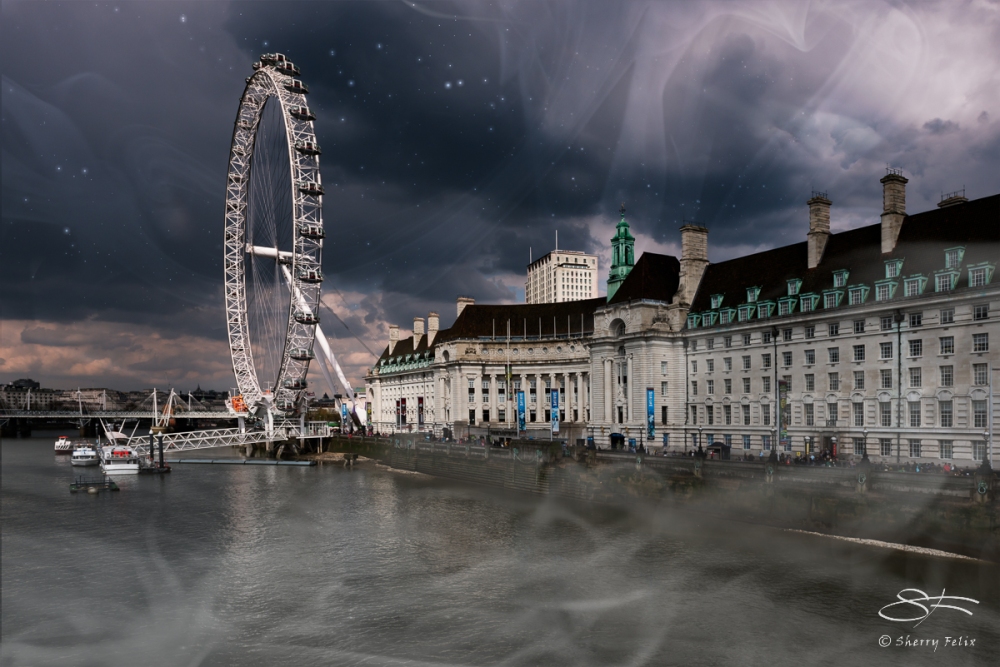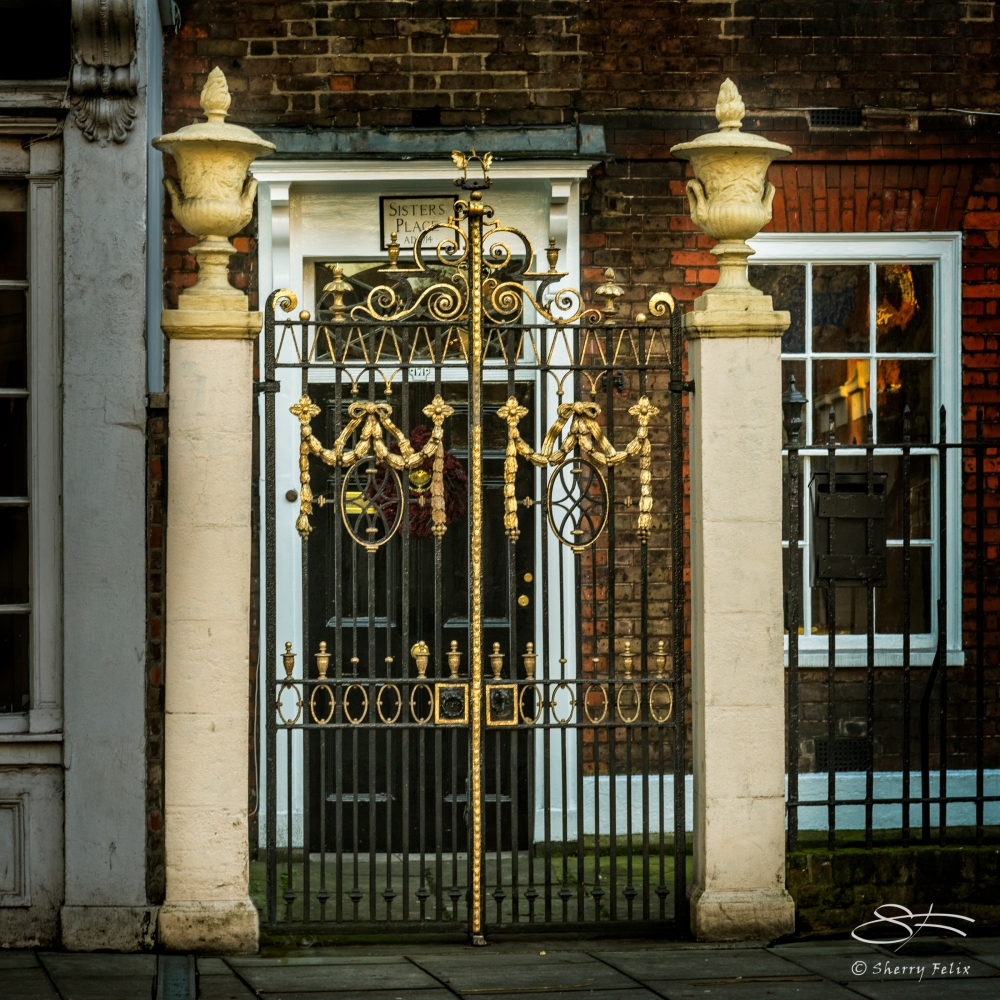
Robin Kent’s original (below) was perfect. I straightened the Ferris wheel and darkened the sky in Lightroom. Then in Photoshop, added wisps of mist, and stars to make it mystical (above).
In 1956 when I was seven my mother and I moved to London. It was my job to light the coal fire in our flat at Queensborough Terrace, near Kensington Gardens. Central heating was not common then; therefore, London was a much foggier place. I remember fogs so thick it was hard to see a yard ahead. Coal fires helped create smog, a mix of smoke and fog. Yellow smog was tinged by the Sulphur in the coal. They were called “pea soupers”. The Great Smog of 1952 (Wikipedia) killed many Londoners. Dirty unwashed and untreated coals were eventually banned and smoke free coals and fuels used instead. Now central heating is the norm and fireplaces occasionally used to create ambience.

Created for Stacy Fischer’s August One Photo Focus.
















































































